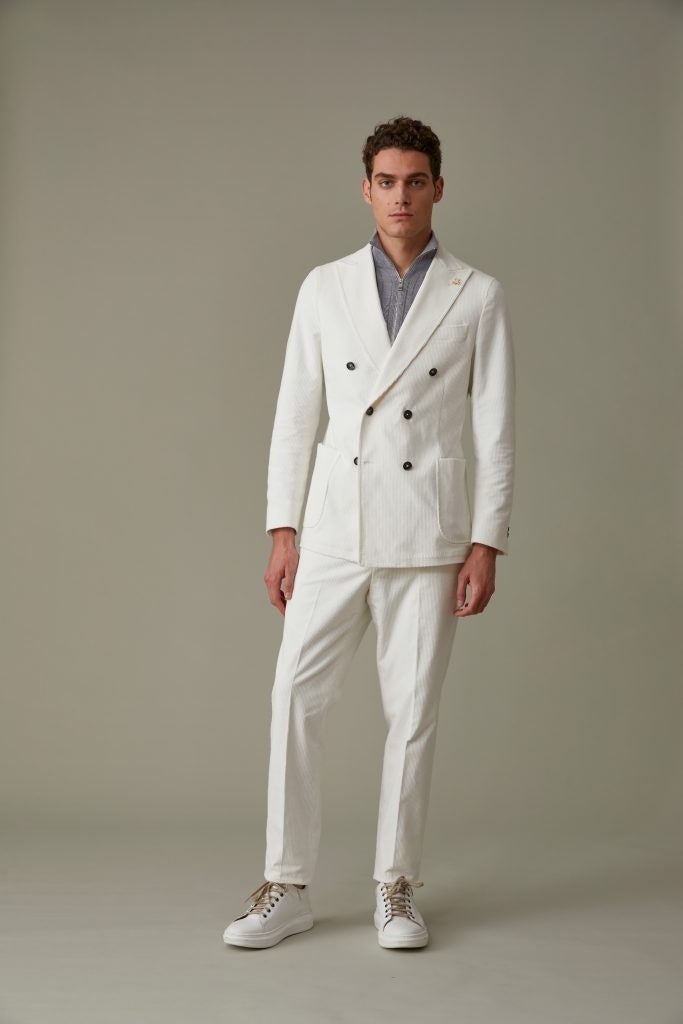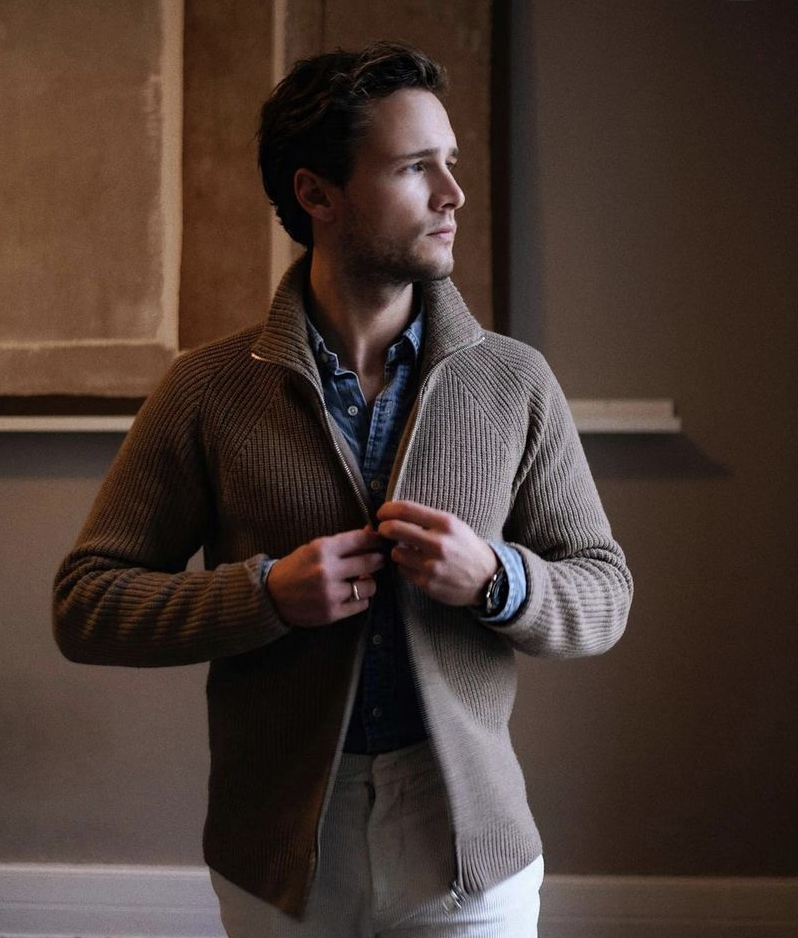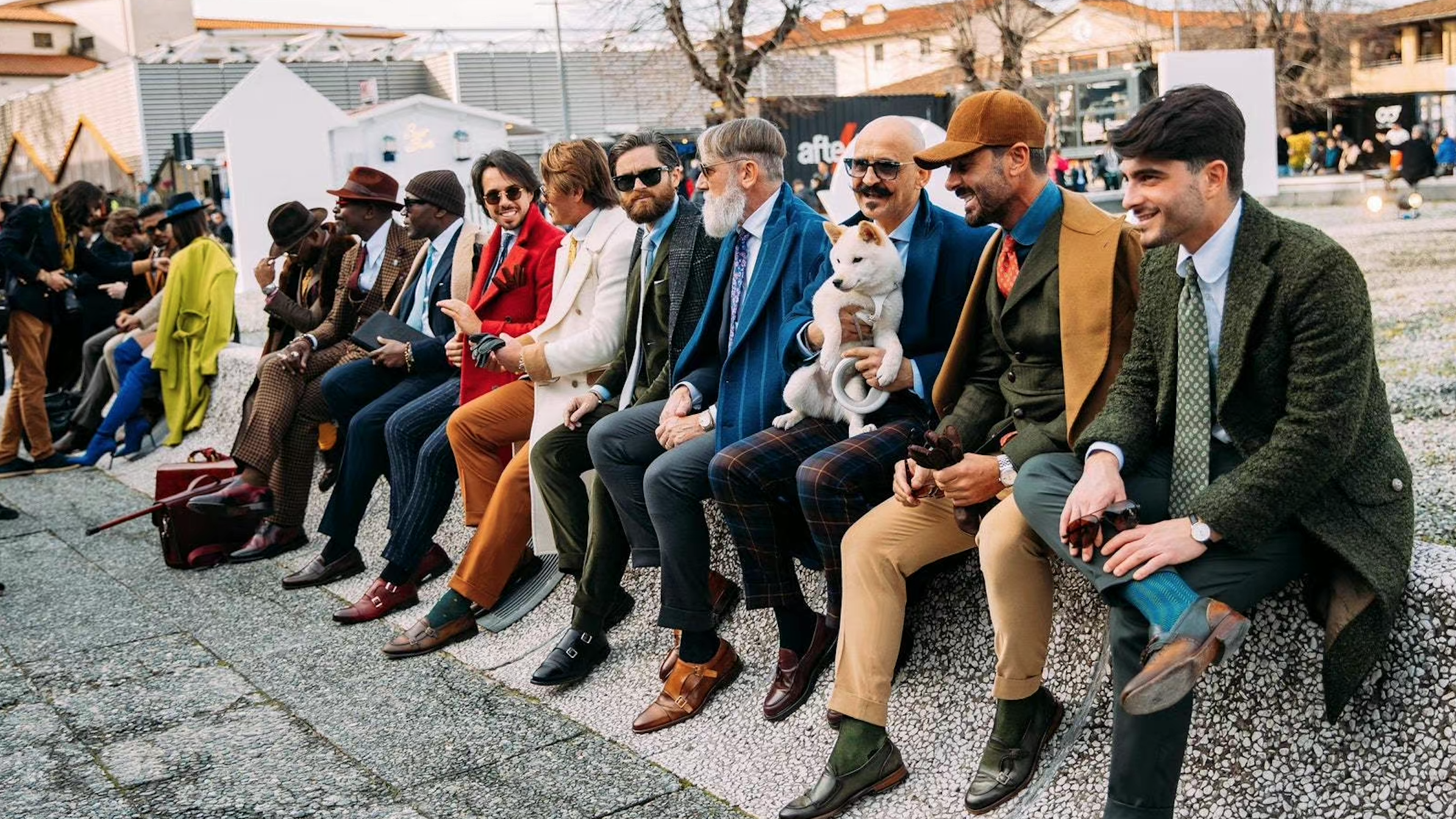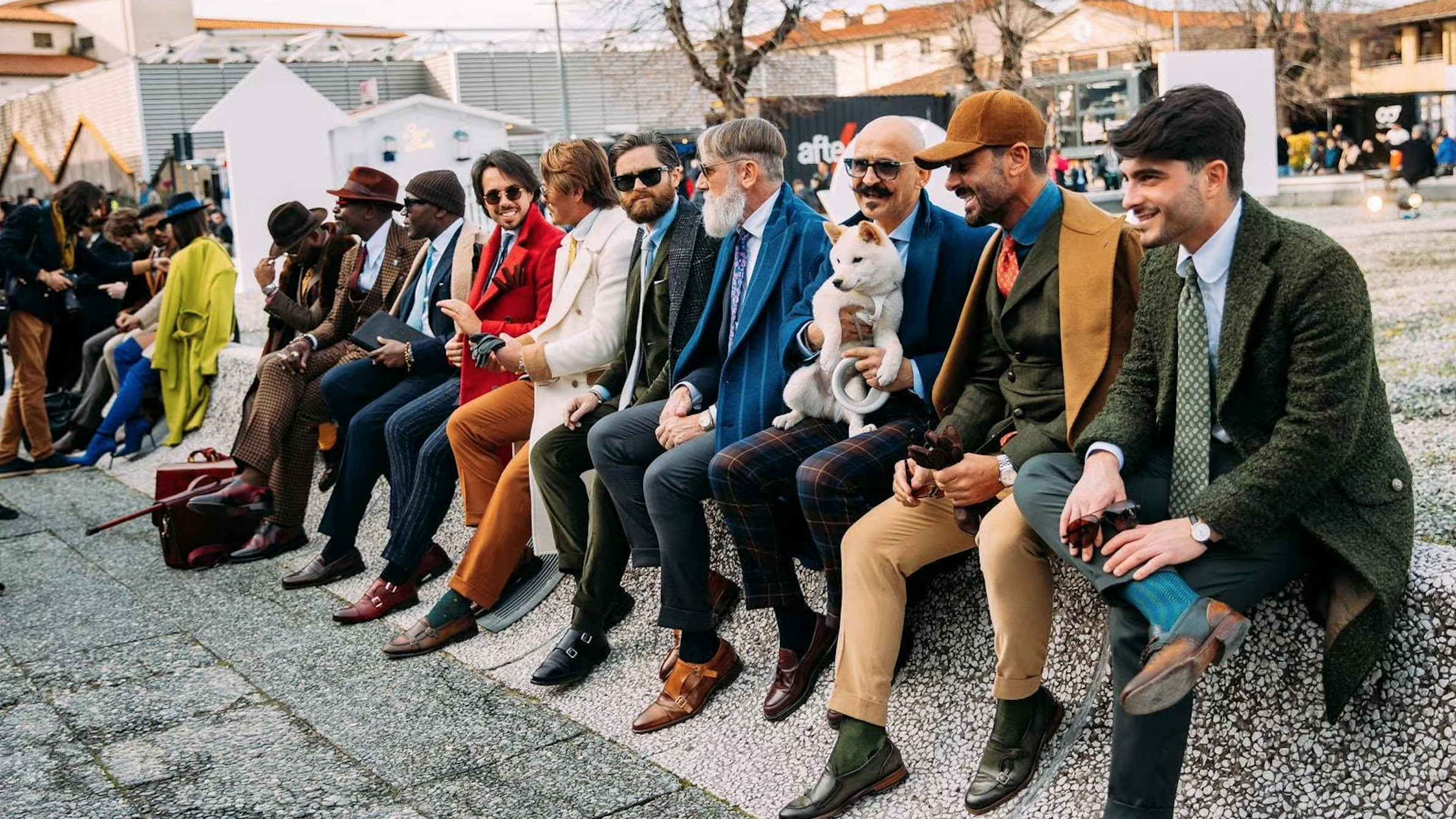Pitti is back. A total of 789 brands participated in this year’s Pitti Uomo 103 — a substantial increase from the previous year’s 671 — of which 40 percent were international names. Although the numbers were still below pre-pandemic levels (1,200 labels in 2019), the hustle and bustle of the fair and the 14,000 visitors have spread optimism.
“The signal of recovery is evident in this edition of Pitti,” says Silvio Calvigioni Tombolini, director of the Italian menswear house Tombolini. “Even though there were many factors — not just the pandemic — which hurt the business: such as the war in Ukraine, soaring electricity bills, and shortage of raw materials, the first results we are seeing are giving us hope; we look forward with confidence.”

The colors and trends identified at Pitti also echoed this general optimism. Alongside the more classic monochromes, solid and bright colors such as orange, fuchsia, and bordeaux made for a strong impact. Overall, luxury menswear establishments insisted on comfortable elegance, using soft, cozy, yet high-quality fabrics. Worth noting, there was a remarkable abundance of shearling jackets.
Chinese buyers and editors were missing at the fair. However, many brands said they expected them to come back soon, probably as early as February, given China’s relieving Covid restrictions.
Businesses are awaiting this return with enthusiasm. As the local men’s fashion market is expected to grow annually by 8.47 percent and was estimated to have reached 93 billion (623 billion RMB) in 2022, countless menswear brands want to carve out a space in the burgeoning market.
Established ultra-luxury brands’ optimism about China’s border reopening#
As the world finally turns the page on Covid, a focal point for bigger players has been the thrilling news of China’s border reopening, which put a smile on the faces of both Niccolò Ricci and Filippo Ricci, the CEO and creative director of luxury menswear label Stefano Ricci.
Niccolò predicts that “in the upcoming six months, we will see a strong wave of Chinese tourists traveling to Europe and the US, with a strong desire to shop and consume at restaurants, hotels, and experiences.” He continues, “although part of the business will return to Europe and US, local shoppers will continue to shop at home, in places such as Sanya, Macau, Shanghai, and Beijing.” Given this, the fifty-year-old label’s strategic growth plan foresees the opening of a new flagship store in Beijing in March.
The Florentine brand at Pitti showcased its exquisite sartorial garments from the celebrative fashion show at the Temple of Hatshepsut in Luxor, Egypt. On January 12, it presented its new “Explorer” collection at its Florentine store. “Luxor became a cornerstone of our journey,” explains creative director Filippo Ricci. “The celebration of Stefano Ricci’s first fifty years was a dream of my father’s which came true. This new chapter marks a turning point.”

At Brunello Cucinelli, shades of beige intertwine with intense hues of burgundy like aged wine. The cashmere king is not courting Gen Z — instead, the models in the latest campaign are mature men. Although young shoppers make up China’s most prominent luxury consumer base, senior, older ultra-wealthy men are more resilient clientele during economic downturns, and more loyal.
The brand is booming in China. During the pandemic, the Italian house succeeded by connecting with native VIP consumers through trunk shows reserved for a small elite and not simply relying on retail. The founder Brunello Cucinelli shares with Jing Daily that “we have always believed in the value of sharing principles and caring for human relations, and at this special time, we have tried to keep true to them. We have tried to foster our relations with targeted proposals, reducing the physical distance by organizing small online events such as collections, presentations, cooking classes, and musical performances at our Teatro Cucinelli.”
As China’s zero-Covid policy ends, a rebound in offline shopping is expected to further boost Brunello Cucinelli’s sales. “The relevance of the no-logo and ready-to-wear offerings is increasing in China, and we are delighted to see a growing number of customers coming into our stores looking for both special event attire and everyday clothing,” concludes Cucinelli.

Emerging and smaller brands’ desire to expand in China (and their hesitation)#
Globalization means smaller fashion players are eyeing expansion to reach a broader audience. Pitti, one of the world’s largest menswear trade shows, connects brands with global buyers and presents a window for smaller and medium small-sized companies to go overseas.
Undoubtedly, one of the key destinations is entering the lucrative market of China. Especially for those who are already stocked in Hong Kong. This is the 2023 plan for Italian centenary brand Valstar, famous for its Valstarino jacket. Luigi Fila, Valstar’s creative director, told Jing Daily that they are planning to enter Mainland China with Lane Crawford, who introduced them to the Hong Kong market.
Meanwhile, for the Fratelli Fila Group‘s brands like Altea and Brooksfield — they will prioritize expansion in the west over China. The cultural barriers and fierce local competition set back these labels’ ventures in the country. “It’s a market that requires a high budget and lots of in-house knowledge to do so,” Fila observes.

Having an experienced local partner is crucial to succeeding in the market if you are a small business. Chateau Orlando, the emerging contemporary line founded by artist and designer Luke Edward Hall in 2022, seeks renowned department stores to partner with when expanding in a new part of the world. After recently debuting in Paris with Le Bon Marché, its next stop is Seoul’s Boon The Shop, where pop-up activations will kick off in 2023. It hopes the Chinese market will follow soon after.
Now that borders in China have reopened, domestic shoppers are expected to be flooding European stores. If not immediately, then sometime soon. And so a Chinese brick-and-mortar store may not be essential to labels in reaching this demographic. A creative marketing strategy that can connect with them, educate them about the brand, and attract them to stores in the world’s fashion capitals may offer pleasing results, with less risk. Yves Salomon owner Thomas Salomon, for one, is thrilled by the idea of Chinese tourists’ return. “Before the pandemic, they made up 50 percent of our Parisian stores’ revenues.”


